Release Date : April 23, 2024
Developer(s) : Surgent Studios
Publisher(s) : Electronic Arts
Platforms : PS5, Xbox Series X/S, PC, Nintendo Switch
Tales of Kenzera ZAU takes players on a compelling journey through the myths of Bantu cultures. But it’s hard to win the favor of the gods when your name is Ori, Samus, or Sargon. This game is imagined by actor Abubakar Salim, best known for his portrayal of Bayek in Assassin’s Creed Origins.
Table of Contents
A Deal with Death
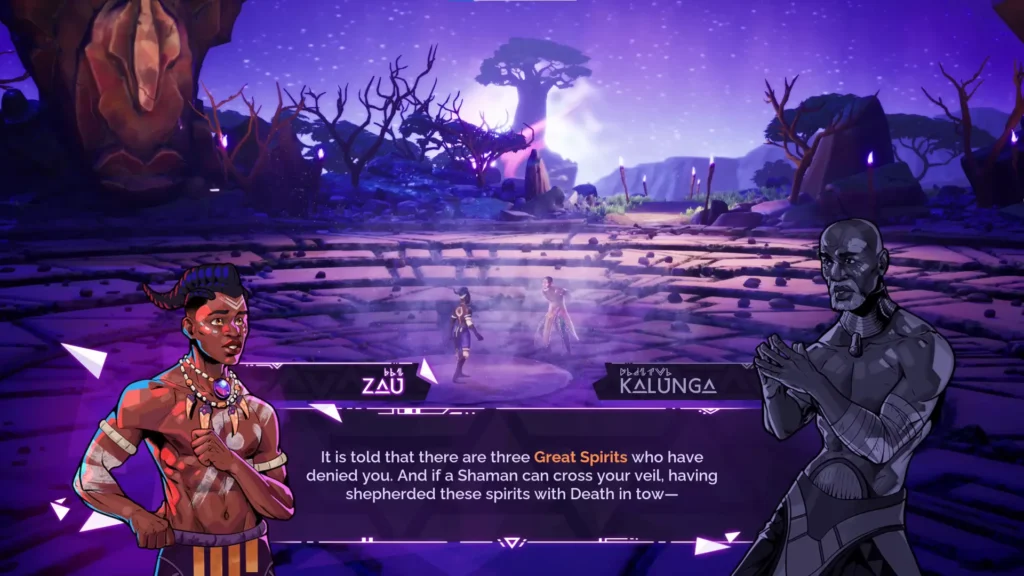
This doesn’t happen often, but from the very first seconds of gameplay, Tales of Kenzera asks you to move from right to left. For anyone familiar with the genre’s side-scrolling gameplay, a little voice immediately rings out: “Why the hell is this game already asking me to retrace my steps? The answer is clear and simple. This EA Originals production is all about chasing the ghosts of the past. To sum things up, Zau, a young shaman, makes a deal with Kalunga, the God of Death. If he succeeds in capturing the spirits of three monsters, Kalunga will allow him to find the soul of his deceased father. The problem is, if Zau fails, he will provoke Kalunga’s wrath.
Kalunga may seem intimidating at first. I mean, he’s the ” Dios de la muerte “! But in reality, he’s a rather pleasant guide who even gives us a heads-up when we don’t yet have the right power to clear an obstacle, which comes in handy when we find ourselves in a giant labyrinth. Yes, Tales of Kenzera is a Metroidvania, with all its ingredients. Zau progresses through levels divided into large zones filled with traps, enemies, and doors to be opened with the right key or power. Of course, the shaman can upgrade his characteristics in exchange for XP points, while equipping himself with passive bonuses. However, ToK does have one original feature: the map’s fog of war is removed per entire zone, rather than actually visited levels. So it’s not easy to know what you’ve really covered. It’s a shame.
A Familiar Dance, New Rhythms
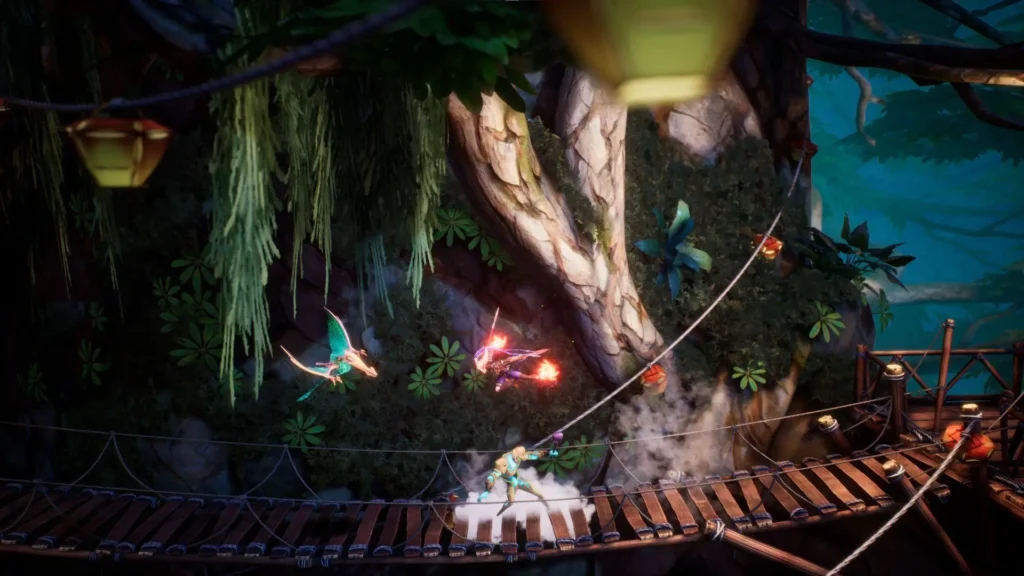
In its exploration/platform/combat/story and puzzle balance, Tales of Kenzera prefers to rely on action/exploration rather than puzzles, which are kept to a minimum. Let’s face it, Zau’s brain is consumed with the need to find his father. He certainly wouldn’t have appreciated having to use his grey area to solve difficult puzzles!
With the controller in hand, we find most of the moves available in today’s Metroidvania, with double-jumping, bouncing off walls, dash (aerial, ground), hand-to-hand, and ranged attacks. Unlike other titles in this genre, ToK is generous with the actions it offers from the beginning, since all the moves we’ve just mentioned are available at the start of the adventure. (Grumblers in the back will say that this somewhat weakens the feeling of increased power).
These moves are a great help in avoiding the usual traps of platforms being destroyed, rocks falling from ceilings, spikes popping out from the ground, thorns on walls, and other projectiles flying out of the scenery. In short, all the elements of the “modern Metroidvania starter kit” are present in Surgent Studios’ production, even the capricious camera that doesn’t necessarily know how to properly frame what needs to be shown.
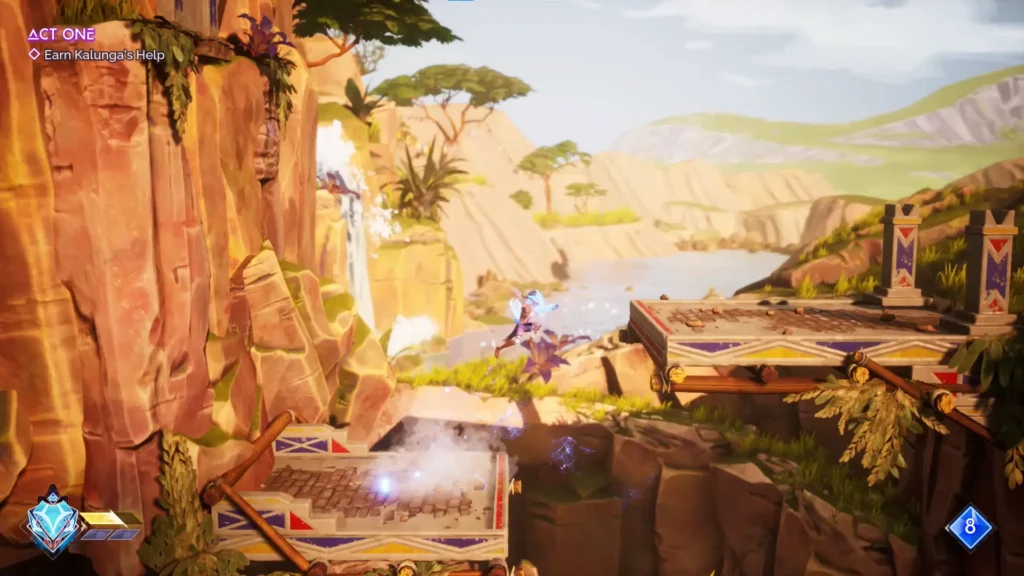
The universe is where the game really shines. Inspired by Bantu myths, it covers legends, gods, places and beliefs rarely seen in modern video games. Enough to encourage you to delve deeper into the codex to learn more about the characters – both friendly and otherwise – you meet. While the graphics aren’t quite as pretty as those of the genre’s leading names, and the discreet soundtrack quickly fades away, Tales of Kenzera succeeds in taking us into its universe with a certain brilliance, especially when the Kiswahili voice-over is activated.
We’d have preferred to see this strong personality in the level design of this EA Originals, but we had to make do with decent rather than outstanding construction. The game lacks bosses, the parkour isn’t diverse enough, and the drop-offs aren’t all that numerous. This lack of side paths makes ToK a strangely linear Metroidvania. The regular, uninspiring arenas, designed for fighting moments, further tarnish the picture. Plus, if you’re a Metroidvania veteran, none of the game’s sequences will strike you as truly original or inventive.
Two Faces, One Battle
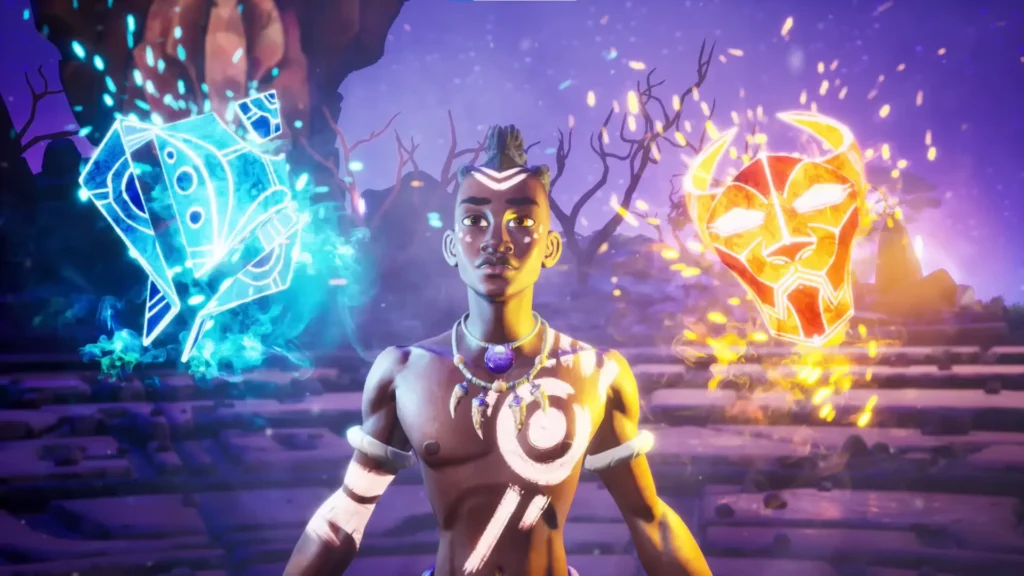
As you’d expect, exploring the lands of Kenzera in search of wandering spirits doesn’t come without demonic creatures to slay. It would be too simple otherwise. Enemies are numerous, and can be dealt with by multiple combinations of blows. Although Surgent Studios’ title doesn’t offer the depth of Prince of Persia: The Lost Crown in its combat mechanics, it does offer enough elements to make encounters vibrant and entertaining enough.
The added bonus of the gameplay lies in the use of two spirit masks, which can be switched instantly by pressing one of the joystick triggers. The Moon mask (blue) grants powerful ranged attacks and can freeze water, while the Sun mask (orange) allows the shaman to focus on hand-to-hand attacks and activate remote mechanisms. It’s important to observe your opponent’s life bar color before striking, as they will lose more life points if the right mask is equipped. This means that battles require you to switch forms regularly to punish the blue and orange enemies that arrive in waves.
Winning a fight against several opponents requires some skills, as you need to choose the right form (Moon/Sun) that gives you access to the right moves (hand-to-hand, ranged). Sending an enemy into the air and finishing him off with spears looks like this: heavy attack with the Sun mask, send the enemy into the air, press the trigger to switch to the Moon mask, press another trigger to aim high, and finally press the action key to fire. The result is satisfying at first, but you soon become dissatisfied with the repetition of closed arenas, with weak architecture that only serves to highlight the chaotic nature of these violent battles. In the second half of the adventure, you find yourself crossing your fingers that a new wave of creatures won’t appear during a fight.
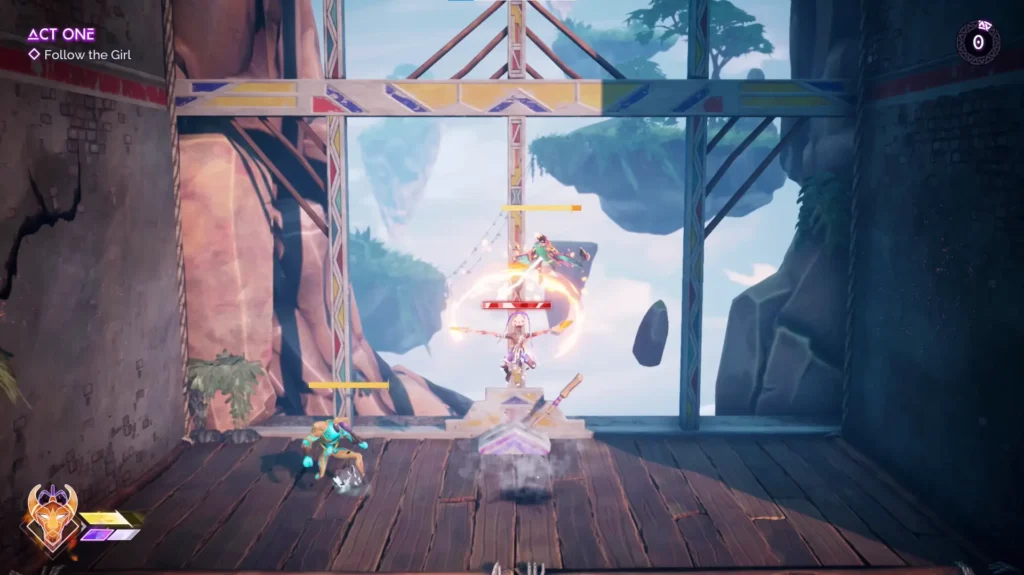
The hero’s lack of reactivity after certain blows inflicted/received can result in serious damage, or even a game over. Deadly blows that send you flying into the scenery are equally frustrating. But one thing’s for sure: you need to master the dash if you hope to escape without too many scratches, and take advantage of the armor-breaker as soon as movement becomes available.
Healing is gained by charging a gauge that fills up when you manage to hit the aggressive creatures, forcing the player to take risks even when survival is hanging by a thread. But don’t be fooled into thinking that Tales of Kenzera is a difficult game. If you die, you reappear at a checkpoint a few seconds before your death. With its gentle challenge and various assists, Surgent Studios’ title is well-suited for anyone afraid of getting lost or not overcoming the challenges of a Metroidvania. But this doesn’t mean that the game is totally challenge-free, as certain sections in the last hour of the game really test your nerves.
Echoes of Greatness

With charming examples such as Hollow Knight, Ori and the Will of the Wisps, and Metroid Dread, it’s impossible not to compare Tales of Kenzera to other big names in the genre. Metroidvania is a fashionable genre, and some studios have become masters of the art. Without going into name-dropping, let’s just say that Surgent Studios’ title is similar to the best, but without reaching their heights.
Boss battles are few and far between, and enemies lack variety in their patterns, which doesn’t encourage you to try out all the moves available. Passive powers don’t add an extra layer of gameplay, and the skill tree doesn’t have enough branches to encourage different playstyles.
Tales of Kenzera also has its 100% platformer sequences and try-hard chases, but again, it doesn’t reach the level of creativity (or execution) of its competitors. That leaves Tales of Kenzera with a pleasant story to follow, some touching moments, unusual lore, and above all, an adventure that ticks almost all the boxes of a solid Metroidvania, albeit lacking a few elements – mainly precision – to live up to the standards of its predecessors.
Conclusion
Tales of Kenzera: ZAU takes us on a vibrant journey through African legends, but the level design doesn’t quite capture the magic of the narrative. In a crowded Metroidvania market, Surgent Studios’ debut title might not compete with the big boys. Still, with a friendly price tag ($20), exciting gameplay, and a captivating world to explore, this game offers a solid 8 hours of entertainment for your buck. It may not be the deepest or most complex adventure, but its charm and value make it worth considering.
